Questionwe have had our 12 week old chow for a week now, she was a stray and we
adopted from the shelter. She pretty much housebroke herself in a couple of
days, apparently was well socialized by prior owner, no fear of people or
other dogs, great at the vets and groomer, no "Chow warning signs" at this
point. We have never owned a Chow but certainly know of their reputation
amd know beyond much socialization she needs obediance training. Would
you suggest group training or one to one with a trainer? Is there a particular
style of training that a Chow would better respond to?
Another question is aboute crates, she is housebroken and has her own
room, should we also provide a crate for her to use with an open door? Our
plan is to give her limited access to the house as she matures: kitchen, TV
room etc. but off limits to formal living and dining areas, do you see any
problems with that?
thanjks for the help ... regards ... george
AnswerHello, George, and congrats on your new addition! I got my oldest dog (a chow/pitbull mix) from the local shelter when she was 10-12 weeks old, too. She'll be 5 in February, and has been absolutely THE best dog ever! Socialization to positive things is very important; when my dog was a puppy, the neighbor's grandson would taunt her when she was outside in our backyard, and even now she can be a little 'weird' around young boys. Teenage boys and men, as well as women and girls, she has no problem with, but she wants nothing to do with young boys as a result of her being teased by one as a puppy.
At her age, you could enroll her in a puppy 'kindergarten' group class, where she should learn the basics like come, sit, down, and stay, and also get used to being around other dogs but still having to listen to you. Chows can be difficult to train sometimes, though, because they are very independent - much like cats. If she is very food motivated, you could try clicker training to begin with, and later, once she understands what the commands mean, introduce leash corrections for disobedience. Many trainers start off from the very beginning using force to teach (ie: saying sit and pulling the leash back while pushing down on the dog's backside, or saying down and pulling the dog's head down with the leash while pushing down on the dog's back or pulling the front legs out in front of the dog, etc.), and that is not fair to the dog because she doesn't know what sit, or down, or whatever means yet. While there is nothing wrong with gentle guidance during the teaching phase, it's best if the dog or puppy can learn to assume the correct position on its own rather than you forcing it into position. You don't necessarily have to use a clicker; you could just use treats to lure her into position and praise her and let her have the treats once she gets in the right position, but the clicker serves to 'mark' the position exactly, much like taking a snapshot, and can help speed the learning process along. After the commands are learned, corrections may be introduced to teach the dog that following a command is not optional, but I do not believe corrections or force have any place in the teaching phase.
I would call around to all the local trainers in your area (stay away from the classes offered in pet stores), ask them what training methods they use, how much they charge, and how long their classes typically are and where they are held. Then ask if you could come and observe a class before making your decision. If they say no, then thank them and mark them off your list. Any good trainer should not mind you coming to watch one of their classes. When you go to watch, do not take your puppy with you. After you've watched at least 2-3 classes, make your decision based on your feelings about the trainer and their methods. If you are not comfortable about anything, speak to the trainer about it, and if you are still uncomfortable about it, then mark that trainer off your list.
As far as using a crate, you may find it necessary when she begins teething to crate her when you leave or cannot watch her. Teething usually lasts from around 5 months to 7 months of age, and then again for a short period around 9-11 months when the last of the molars are cut. On the other hand, if her room is completely puppy proof, then you may can just use that room to confine her to when you leave the house, and be sure to provide lots of things for her to gnaw on during those times. Large knuckle or femur bones are good; as well as a Kong filled with peanut butter, cream cheese, canned dog food, plain yogurt, etc. and frozen; or Nylabone Healthy Edibles Naturals. Regular Nylabones contain plastic, so I do not recommend them. Rawhides swell up when wet, and if she were to swallow a large piece, it could cause an obstruction, so I don't recommend rawhide either.
Good luck with her! I hope she brings you as much joy as my little lady has brought to me.

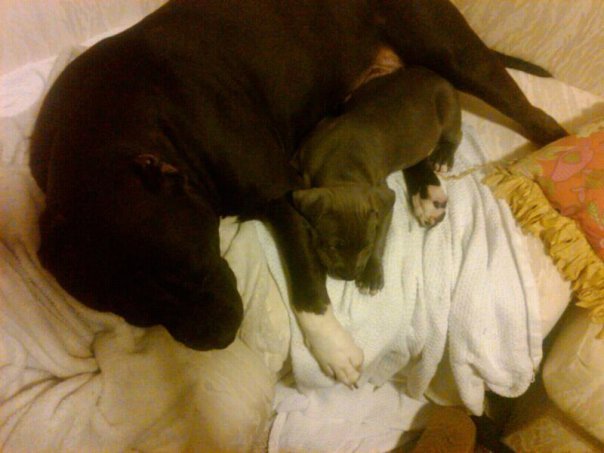 Dog aggression towards puppy
Question
The father and his pup
My older dog is an Amer
Dog aggression towards puppy
Question
The father and his pup
My older dog is an Amer
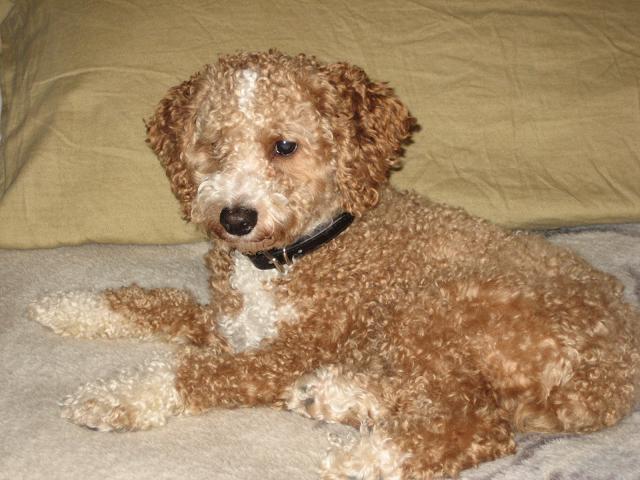 cockapoo agression
Question
Pets11.jpg
We have had our Cockapoo (Tyson) si
cockapoo agression
Question
Pets11.jpg
We have had our Cockapoo (Tyson) si
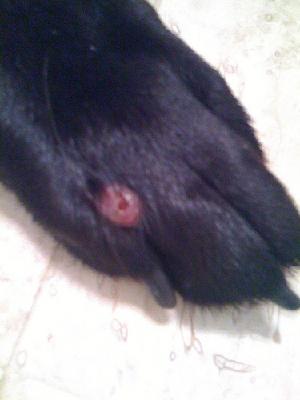 Redish bump between dogs toes
QuestionHello I have a three year old Australian Shephe
Redish bump between dogs toes
QuestionHello I have a three year old Australian Shephe
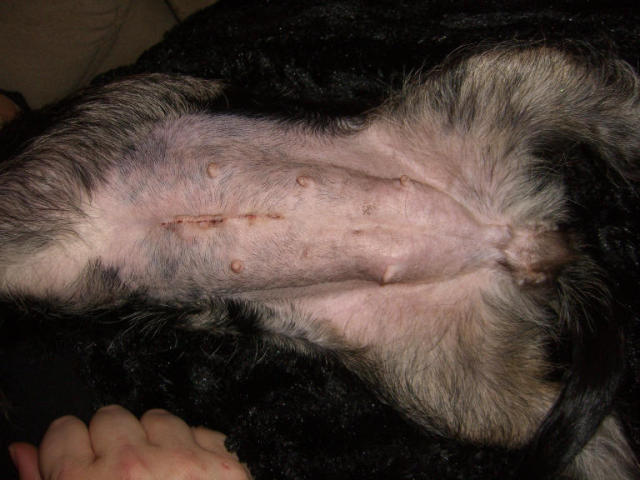 Dachshund spay - swollen mammaries
Question
Lilly
Hi Patti,
We took our 10 month old mini
Dachshund spay - swollen mammaries
Question
Lilly
Hi Patti,
We took our 10 month old mini
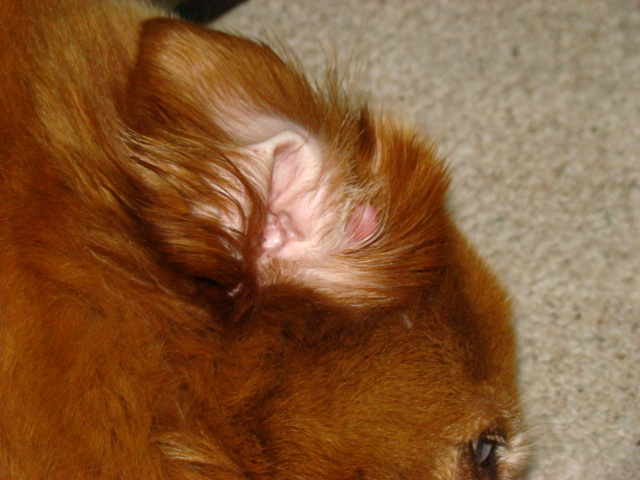 Ear Care
Question
Erins Ear 2
I had my dog groomed two days ago
Ear Care
Question
Erins Ear 2
I had my dog groomed two days ago